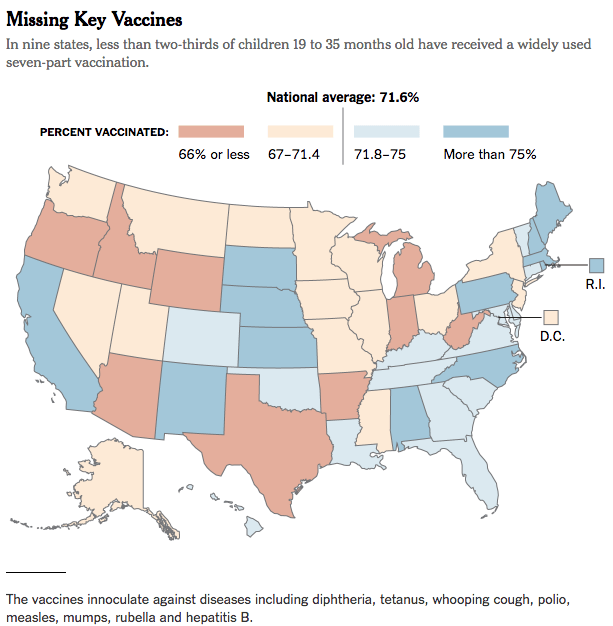
Data is plentiful, diverse, and requires a lot of work to be understood. Data analysis is the foundation of extracting key insights for analysts, designers, and anyone else involved in the process. But you need data visualization for everyone else. We all need to understand data when it directly affects us. But is it such a big deal if people just ignore it? Yes, and the world of medicine is a prime example of just how dangerous ignoring data can be. Data visualization is critical because it’s an accessible tool for the public to comprehend key insights.
When opinions run wild
When data isn’t understood or just simply ignored, there’s usually a strong opinion behind it. Bias is a strong enemy of data, denying the facts and context despite evidence.
- When you feel better, that means you’re better and you stop taking your antibiotics or blood pressure medication. Wrong! One of the most common mistakes people make is incorrectly consuming medications (sometimes even knowingly), which negates the intended effects with the ability to harm us.
- Well, people have said that vaccines contain dangerous bacteria and viruses to intentionally infect patients, which makes them dangerous. Well, yes and no. Vaccines contain weakened microbes that cannot develop into an illness in order to build a resistance to the real thing. We get flu shots with incredibly minute and benign traces of flu virus strains and chemicals that work together to protect us. If you come in contact with a full-powered flu virus, your body has already learned how to eliminate it, thanks to the vaccine.
Raw data and spoken explanations aren’t enough to make people understand. Hysteria and trendy movements easily disrupt medical data because many people don’t know the key insights. In order to counter dangerous convictions, we need to be smart data consumers and careful data analysts. The anti-vax (anti-vaccine) movement is scientifically one of the worst ideas for mankind that has reduced the number of vaccinated children.
There are parents who are leaving the movement, all after their children come down with dangerous illnesses like whooping cough. Though they understand now how important medical science is, they once ignored the data and believed vaccines to be dangerous. Why? A doctor created fake data and people simply believed it.
Making sure real data is properly understood is a matter of life and death, even for people outside of the movement. Diseases that were thought to be eradicated have returned thanks to those who refuse vaccines. Well, I’m vaccinated so it’s not a big deal, right? You might not be the one at risk, but there are still millions of people around the world with compromised or weaker immune systems like infants, elderly people, cancer patients, and basically anyone who hasn’t come into contact with diseases in decades. There’s no “good” data on the outbreaks that are reappearing around the world, just the fact they’re reappearing. So why aren’t people paying attention?
Consequences
Officials and the public believe very strong painkillers lead to opioid addictions and subsequently deny prescriptions to prevent prescriptions. In previous years, strong opioids resulted in addiction and thousands of deaths, but that’s not the case anymore. The data today actually reveals that very few painkiller users become severely addicted or overdose. But because of the misconceptions, people in chronic pain who need those prescriptions are struggling. This leads to aggressive, painful withdrawals that devolve back into untreated illness and hopelessly turning to hard drugs. People don’t truly understand or know where to find the real data, so they end up believing widespread myth because that’s what others say is true. Even doctors get caught up in biased conviction, so it’s not surprising the public does too.
What happens when pharmaceutical companies get caught up? High prices. In fact, even officials end up ignoring data with disastrous consequences. In the past, regulators and companies have knowingly sold problematic drugs, which ended up infecting and killing consumers because they were more focused on profits. By the time patients and victims realize what’s happening, it’s too late. How does this happen? When some companies become so focused on one data set (profits) they ignore the others (public lives).
Data visualization isn’t the final product, it’s the beginning of educating your audience and yourself. Not every data set is a matter of life and death, but making sure that your audience and even yourself has access to key data insights is critical.
Creating change
We have to question why people believe such ideas, even though many myths have been proven wrong. Making sure your audience understand the data and personally seeking out data can change the future. How can you transform data to educate people? Data visualization can be one of the strongest tools to educate and instill change.


